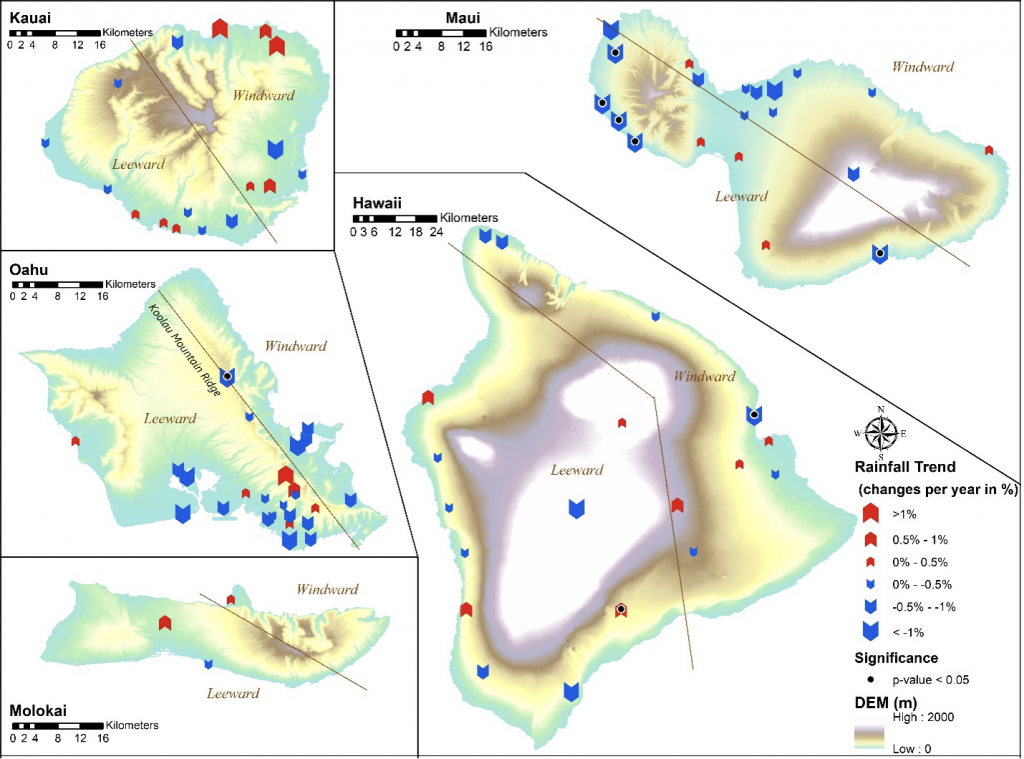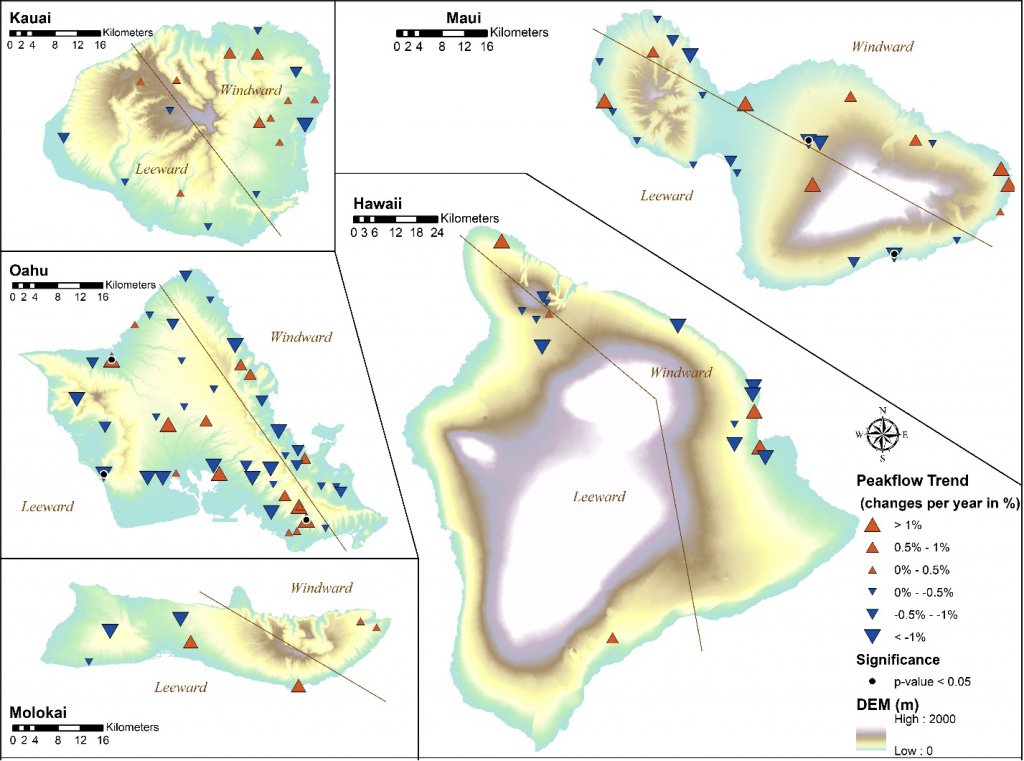Contributed by Yu-Fen Huang: yfhuang@hawaii.edu
In Hawaiʻi, both magnitude and occurrence dates of annual maximum daily rainfall (RFmax) and the annual stream peak flow (PFmax) have shifted from 1970 to 2005. More than half stations of both show decreasing trends across the Hawaiian Islands, except for Kauaʻi and Molokai. Comparing to the trends of RFmax, trends PFmax show stronger distinction between windward and leeward. The occurrence dates of both RFmax and PFmax have shifted from early Jan. to late Dec., likely due to the changes in ENSO. We also found that the annual peak flow rarely coincides with the annual maximum rainfall, and more studies are needed. These overall findings alert us to prepare for the flood impact differently, and likely indicate differences responses of ecosystems. This work has been published in the Journal of Hydrology. Publication Link

Figure 1. RFmax trends from water years 1970 to 2005 across five major Hawaiian Islands. The brown line indicates the physiographic division of windward (northeast) and leeward (southwest) regions on the islands.

Figure 2. PFmax trends from the water year 1970 to 2005 for the five main Hawaiian Islands. The brown line indicates the physiographic division of windward (northeast) and leeward (southwest) regions on the islands.


Figure 3. The occurrence date (median ± 0.5 circular deviation) of RFmax (green line) and PFmax (black line with the ENSO phase shaded (red: warm phase; blue: cool phase, white: neutral) ) on the leeward (left) and windward (right) sides. The y-axis indicates the months from June through May (bottom to top). Occurrences under ENSO warm phase are indicated by red squares for RFmax, and a red circle for PFmax. The Oceanic Nino Index (ONI) on the top indicates the strength of the ENSO from 1970 to 2005.
The Sen’s slope estimator for the timing shows the occurrence date of RFmax and PFmax shifted earlier. In leeward regions, the median occurrence date of RFmax and PFmax were ~1.5 days and significantly ~1.5 days earlier, respectively. On the windward side, the median occurrence date of RFmax and PFmax significantly shifted ~half day and ~6 hr later, respectively.

